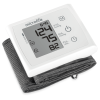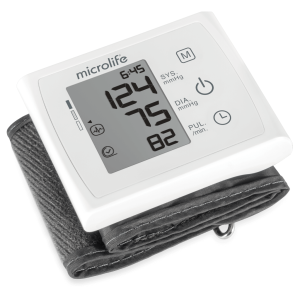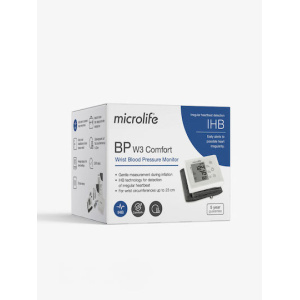FINGERTIP PULSE OXIMETER MD30
30,00 €
SKU: 88-078
Categories: OXIMETERS, DIAGNOSTIC AND TREATMENT DEVICES
Finger pulse oximeter for reliable measurement of blood oxygen saturation (SpO2) and heart rate.
Technical Specifications
- Display: SpO2, Pulse, Waveform
- Oxygen Saturation Measurement Range: 70% – 100%
- Heart Rate Measurement Range: 30 – 250 BPM
- Display: OLED
- 6 Screen Display Modes
- Soft-Padded Finger Rest
- Power supply: 2 AAA 1.5V batteries
Pulse Oximetry
- The above examination is performed with the well-known oximeter, all you need to do is place the oximeter on your finger.
- Within a few seconds the oximeter will measure pulse and hemoglobin oxygen saturation (SPO2)
- Basic requirements for a reliable measurement are that the fingers are clean, the nail is not painted, and it is not after any intense physical exercise.
- It is recommended to use the middle finger due to larger application surface on the reading sensor
How does the oximeter work?
- The oximeter has a microprocessor and consists of a diode lamp and a photodetector placed directly opposite each other. The diode lamp emits red light at 660 nm (red region) and infrared light at 940 nm (infrared region).
- When hemoglobin is bound to oxygen (oxyhemoglobin), its shape changes and it absorbs light. different wavelength from the hemoglobin that is not bound to oxygen (reduced hemoglobin). Oxyhemoglobin absorbs in the infrared region and the reduced one in the red region. This therefore gives the percentage of hemoglobin that is bound to oxygen.
- Normal values are equal to or greater than 95%.
- It is worth noting that during intense exercise, a drop in saturation by 5% is often normal, however, in this case it is advisable to consult your doctor.
- Falsely decreased SPO2 is observed when we have low blood perfusion (Systolic pressure <80 mmHg), severe anemia (HCT<20%), and hypothermia. In addition, falsely decreased can be found in nail polishes especially in blue, green and black.
Manufacturer
Related products
SCALES
19,00 €
PRESSURE GAUGES
DIGITAL WRIST BLOOD PRESSURE MONITOR MICROLIFE BP W3 COMFORT
46,00 €
OXYGEN THERAPY AND SUCTION DEVICES
165,00 €
45,00 €
PRESSURE GAUGES
59,00 €
DIAGNOSTIC AND TREATMENT DEVICES
9,00 €
DEVICE CONSUMABLES
60,00 €
DEVICE CONSUMABLES
22,00 €

















